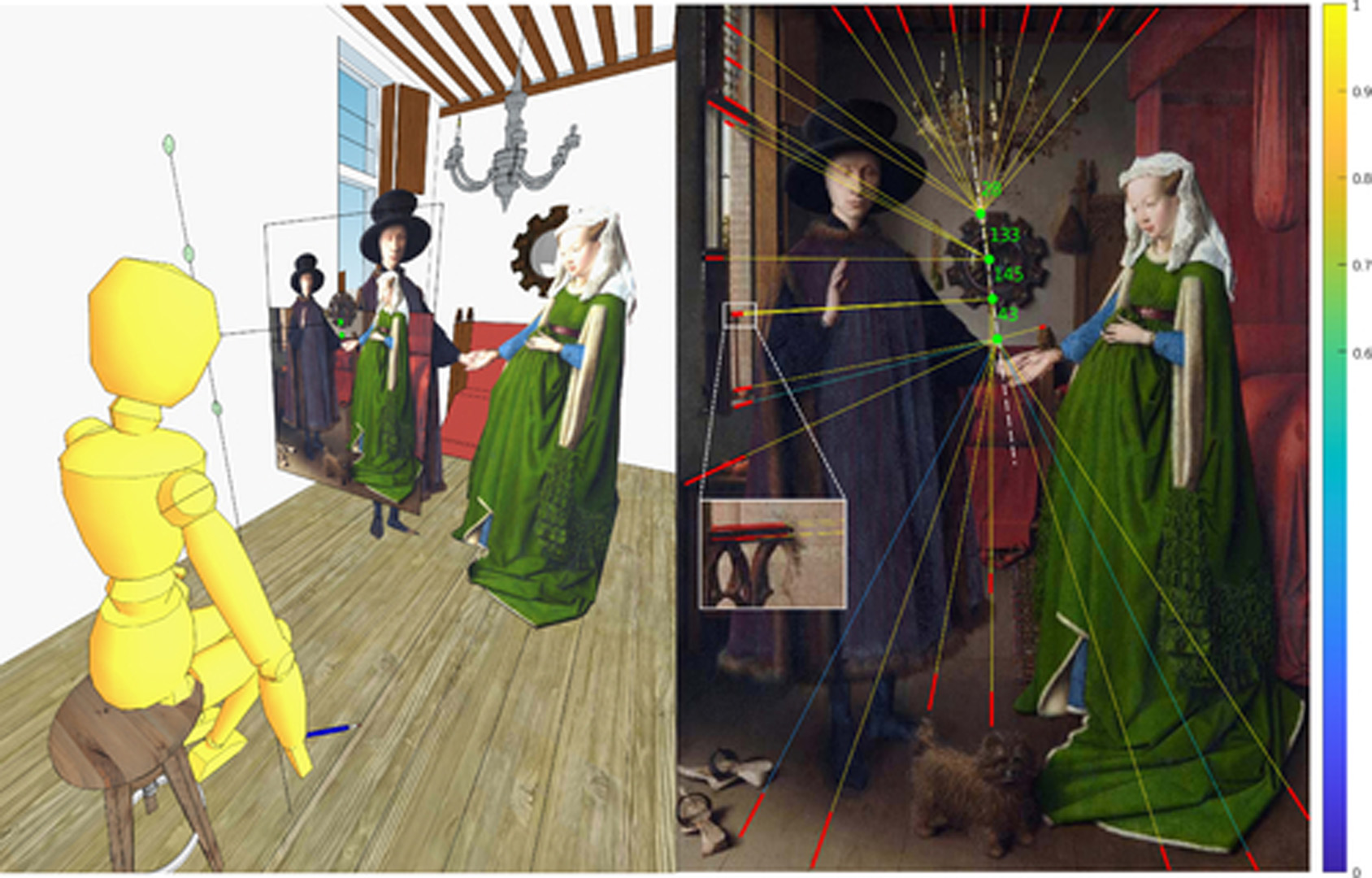“Jan van Eyck’s Perspectival System Elucidated Through Computer Vision” by Simon
Conference:
Type(s):
Title:
- Jan van Eyck's Perspectival System Elucidated Through Computer Vision
Presenter(s)/Author(s):
Abstract:
It is generally accepted that Jan van Eyck was unaware of perspective. However, an a-contrario analysis of the vanishing points in five of his paintings, realized between 1432 and 1439, unveils a recurring fishbone-like pattern that could only emerge from the use of a polyscopic perspective machine with two degrees of freedom. A 3D reconstruction of Arnolfini Portrait compliant with this pattern suggests that van Eyck’s device answered a both aesthetic and scientific questioning on how to represent space as closely as possible to human vision. This discovery makes van Eyck the father of today’s immersive and nomadic creative media such as augmented reality and synthetic holography.
References:
1. Leon Battista Alberti and Rocco Sinisgalli (Ed. and Transl.). 2011. On Painting: A New Translation and Critical Edition. Cambridge University Press, Cambridge, UK.
2. Rachel Billinge and Lorne Campbell. 1995. The infra-red reflectograms of Jan van Eyck’s portrait of Giovanni(?) Arnolfini and his wife Giovanna Cenami(?). National Gallery Technical Bulletin 16.
3. Antonio Criminisi and David G. Stork. 2004. Did the great masters use optical projections while painting? Perspective comparison of paintings and photographs of Renaissance chandeliers. In Proceedings of the 17th International Conference on Pattern Recognition (ICPR 2004), 645–648.
4. Antonio Criminisi, Ian Reid, and Andrew Zisserman. 2000. Single view metrology. International Journal of Computer Vision 40, 2, 123–148.
5. Jacques Desbiens. 2009. The perspectives of synthetic holography. In Proceedings of the 8th International Symposium on Display Holography (ISDH 2009).
6. James Elkins. 1991. On the Arnolfini Portrait and the Lucca Madonna: did Jan van Eyck have a perspectival system? The Art Bulletin 73, 1 (March 1991), 53–62.
7. Vladimir Geroimenko (Ed.). 2018. Augmented Reality Art: From an Emerging Technology to a Novel Creative Medium. Springer International Publishing.
8. Penny Howell Jolly. 1998. Jan van Eyck’s Italian pilgrimage: a miraculous Florentine Annunciation and the Ghent altarpiece. Zeitschrift für Kunstgeschichte 61, 369–394.
9. Antonio di Tuccio Manetti, Howard Saalman, and Catherine Enggass (Transl.). 1970. The Life of Brunelleschi. Pennsylvania State University Press, University Park, PA.
10. Maximiliaan Martens, Till-Holger Borchert, Jan Dumolyn, Johan De Smet, and Frederica Van Dam (Eds.). 2020. Van Eyck. Thames & Hudson, London, UK.
11. Erwin Panofsky. 1927. Die Perspektive «als symbolische Form.» Lectures of the Warburg Library, Leipzig/Berlin.
12. Agnès Desolneux, Lionel Moisan, and Jean-Michel Morel. 2008. From Gestalt Theory to Image Analysis: A Probabilistic Approach. Springer-Verlag.
13. Gilles Simon, Antoine Fond, and Marie-Odile Berger. 2018. A-contrario horizon-first vanishing point detection using second-order grouping laws. In Proceedings of the 15th European Conference on Computer Vision (ECCV 2018), September 8-14, 2018, Munich, Germany, 323–338.




